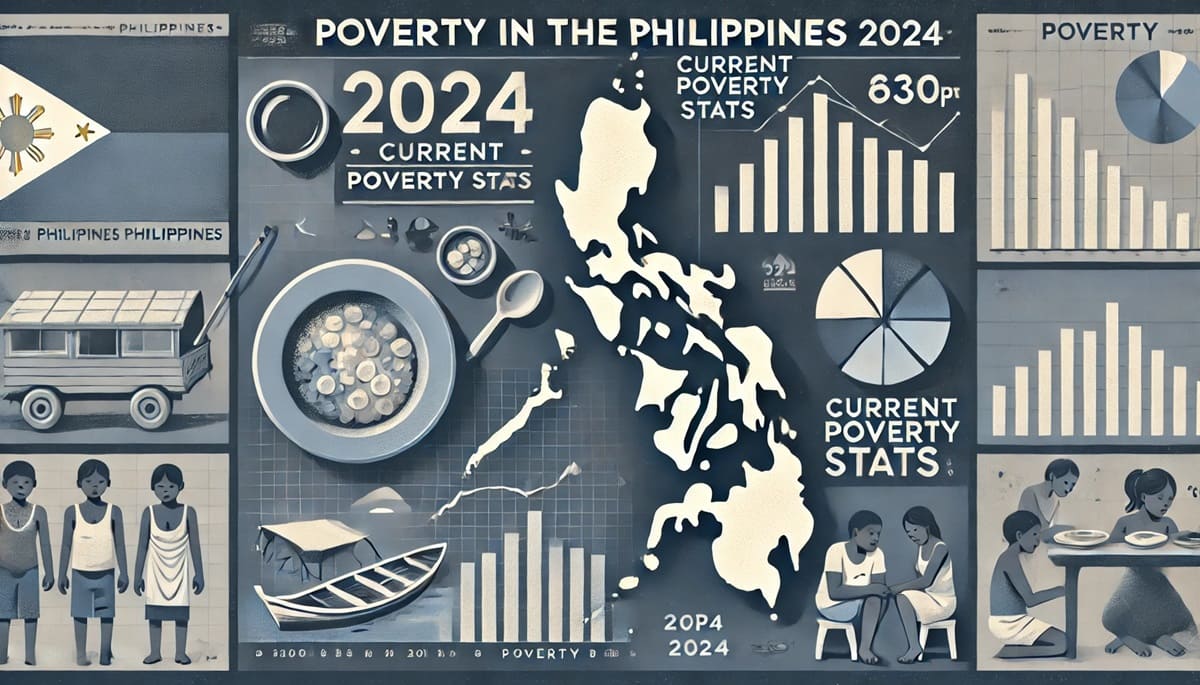About 18.1% of people in the Philippines are considered to be below the national poverty threshold. That is the percentage of the working population—2.2% in 2022—that falls below the $1.90 power parity per day. In the Philippines, the under-mortality rate was 26 per 1000 live births in 2021, and the percentage of the population living below the national poverty level is 18.1%. In addition, 2.2% of those in employment earned less than $1.90 PPP each day.
There are various reasons that are thought to be accountable for the rise in poverty in the Philippines. These variables include the inadequate employment generation that prevents full development of job qualifications in each aspect and the low to moderate economic growth over the past 40 years that has delayed the alleviation of poverty.
Poverty Stats in the Philippines in 2024- What They Say?
With some recent modifications in the moderate economic expansion that had been hampered by poverty, economic growth is nevertheless characterised by boom and bust cycles. Poverty affects people across all income ranges, industries, and geographical areas. It is also caused by population growth, which is thought to be the primary cause of poverty.
Rising inflation during the economic crisis and persistently high levels of income- and asset-based inequality have been taxing the economy and having a beneficial effect on its growth. According to federal analysts, the Philippines is expected to have significant challenges in 2024. These difficulties will have an impact on the nation’s GDP, which has a revised target range of 6.5 to 7.5$ from the previous range of 6.5 to 8%.
The new year 2024 is in line with fresh starts that have been determined by obstacles that have been faced in the past and that have an impact on the future. In the Philippines, poverty is a symbol for those who are thought to turn around and start afresh. According to the most recent federal Social Weather Station study, people’s lives have been better over the past year.
Poverty Stats in the Philippines In 2024
The Philippines’ poverty rate was estimated to be 22.4% in December 2023, which is still below the 9% goal set by outgoing President Ferdinand R. Marcos by 2028. According to Federal World Bank projections, the poverty rate is expected to decrease from 17.8% in 2021 to 13.7% in 2023 and 10.70% in 2024. Pretax income is used by the official poverty methodology in the Philippines to calculate the current household welfare poverty statistics.
A person is considered to be in poverty if they do not have a consistent source of income to cover their basic needs, such as clothing, food, and shelter. Because poverty is such a broad concept, there are always new government policies arising from the conflicts that persist. In addition to the rise in poverty, the Philippines’ economy has recovered well from COVID-19, with GDP growing at a faster rate of 5.9% in the third quarter of 2023.
Because of increased efforts to combat increasing inflation and policies aimed at accelerating economic growth, poverty is also the most prominent news story. Targeted programs, allowances, and the government living savings program, which assist low- and moderate-income households in lessening the adverse effects of inflation, are other measures used to combat poverty in the Philippines. The federal government implements a number of crucial policies to combat poverty.
The range of 6.5 to 7.5% was the aim for Philippine poverty in January 2024, which explained the negative effects on the economy.
